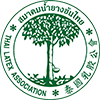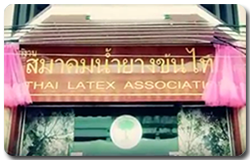KUALA LUMPUR: China’s glove manufacturers are already looking beyond their country, with eyes on Southeast Asian countries that offer more cost-competitive environments after the United States said it will increase tariffs on Chinese products, including rubber medical and surgical gloves.
Hartalega Holdings Bhd CEO Kuan Mun Leong said this would intensify competition in the industry, saying: “There are two sides to a coin in this situation.”
“If production shifts to Southeast Asian countries like Malaysia, Indonesia, or Vietnam – where there is an abundant supply of natural rubber – these manufacturers could become more competitive in producing natural rubber gloves, thereby altering the competitive landscape,” he told SunBiz at the 11th International Rubber Glove Conference & Exhibition 2024 recently.
“On the positive side, given the current geopolitical tensions between the US and China and the tariff hike, American buyers are unlikely to source most of their supplies from China. As a result, buyers are diversifying their sources, opting to purchase from China and other countries like Malaysia. Due to the tariff barriers, this situation benefits Malaysian glove manufacturers.
“Some buyers have already begun shifting their purchases to Malaysia as a risk management strategy. However, with 2026 still a few years away, we have to wait and see how the situation unfolds and what the actual tariff rate will be when the time comes,” Kuan said.
The US has announced that it will increase the import tariff on Chinese-made rubber medical and surgical gloves from 7.5% to 25%, effective 2026.
Due to the tariff hike, the average selling price for Chinese gloves is expected to increase to US$20-US$21.25 (RM86.60-RM92) per 1,000 units from the current US$16-US$17.
According to data from the US International Trade Commission, the country imported close to US$640 million worth of face masks, syringes, and gloves from China in 2023.
Kuan said prices of rubber gloves, based on average selling price (ASP), are stabilising this year, influenced by several factors.
The exchange rate plays a significant role, he said, with the ringgit expected to strengthen against the US dollar due to Malaysia’s strong economy.
“Additionally, the dollar is anticipated to weaken as the Federal Reserve may cut interest rates, further boosting the ringgit. Since we sell in US dollars, the strengthening ringgit will be factored into our pricing, meaning we will have to pass this on to our customers.
“The industry quotes prices on a month-to-month basis. So, as the cost factors change, we will reflect it in our selling prices.
“Combined with the low material costs, this creates a stable pricing environment. There is even an upward trend, and I expect the ASP to increase for the remainder of the year,“ Kuan said.
Source : Global Rubber Markets |








